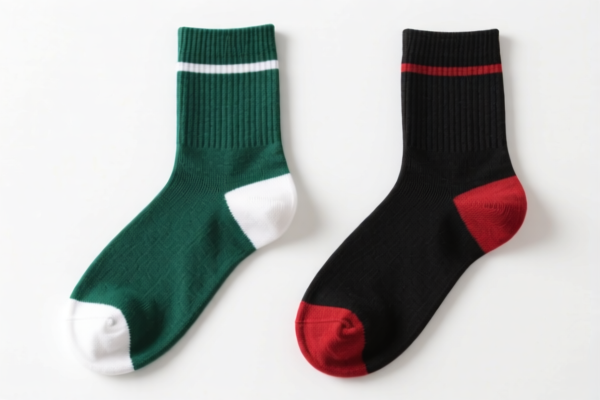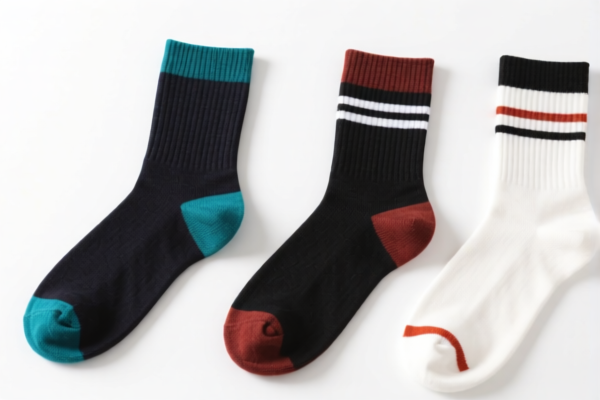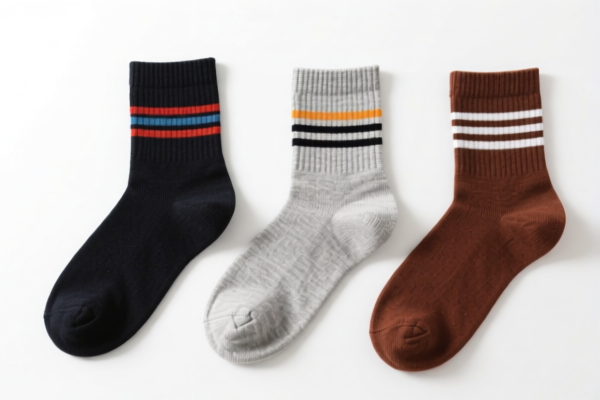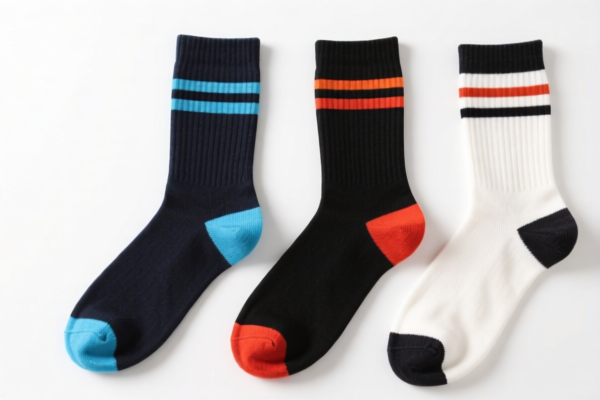| HS Code | Official Doc | Tariff Rate | Origin | Destination | Effective Date |
|---|---|---|---|---|---|
| 6115940000 | Doc | 48.8% | CN | US | 2025-05-12 |
| 6115956000 | Doc | 47.5% | CN | US | 2025-05-12 |
| 6114909070 | Doc | 35.6% | CN | US | 2025-05-12 |
| 6114909030 | Doc | 35.6% | CN | US | 2025-05-12 |




Sport Socks
Sport socks are specialized footwear designed to enhance performance, comfort, and protection during athletic activities. They differ significantly from everyday socks in terms of materials, construction, and features.
Materials
A variety of materials are used in the construction of sport socks, each offering unique properties:
- Synthetic Fibers: These are the most common, including:
- Polyester: Durable, moisture-wicking, and affordable. Often blended with other fibers.
- Nylon: Strong, abrasion-resistant, and quick-drying.
- Acrylic: Provides warmth and cushioning, often used in winter socks.
- Polypropylene: Excellent moisture management, lightweight, and odor-resistant.
- Natural Fibers:
- Cotton: Soft and comfortable, but retains moisture, making it less suitable for high-intensity activities. Often blended with synthetics.
- Merino Wool: Naturally moisture-wicking, odor-resistant, temperature regulating, and comfortable. A popular choice for a wide range of sports.
- Bamboo: Soft, breathable, and moisture-wicking, with natural antibacterial properties.
- Spandex/Elastane/Lycra: Added for stretch and compression, improving fit and support.
Purpose and Function
The primary functions of sport socks are:
- Moisture Management: Wicking sweat away from the skin to prevent blisters and discomfort.
- Cushioning: Providing impact absorption and protection in high-pressure areas (heel, ball of the foot).
- Support and Compression: Enhancing blood circulation, reducing muscle fatigue, and preventing injury.
- Blister Prevention: Reducing friction between the foot and the shoe.
- Temperature Regulation: Keeping feet cool in warm weather and warm in cold weather.
- Durability: Withstanding the rigors of athletic activity and frequent washing.
Usage Scenarios
Sport socks are tailored to specific activities:
- Running Socks: Lightweight, moisture-wicking, and often feature targeted cushioning and arch support. Variations exist for road running, trail running, and marathon distances.
- Basketball Socks: Thick cushioning for impact absorption, ankle support, and often feature reinforced heels and toes.
- Soccer Socks: Long socks that cover shin guards, providing protection and support.
- Hiking Socks: Durable, cushioned, and moisture-wicking, often made with wool blends for warmth and odor control.
- Cycling Socks: Lightweight, breathable, and often feature compression and arch support.
- Tennis Socks: Cushioning and support for lateral movement.
- Training Socks: Versatile socks for general athletic activities.
Common Types
- No-Show Socks: Invisible socks worn with low-cut shoes.
- Crew Socks: Cover the ankle, providing moderate support and protection.
- Quarter Socks: Slightly higher than crew socks, offering more ankle support.
- Knee-High Socks: Provide maximum support and protection, commonly used in soccer and other field sports.
- Compression Socks: Apply graduated pressure to improve blood circulation and reduce muscle fatigue.
- Toe Socks: Separate each toe to prevent blisters and improve foot comfort.
Sport socks fall under the category of socks and other hosiery, knitted or crocheted. Here are the relevant HS codes based on the provided information:
- 6115940000: This HS code covers panty hose, tights, stockings, socks and other hosiery, including graduated compression hosiery (for example, stockings for varicose veins) and footwear without applied soles, knitted or crocheted: Other: Of wool or fine animal hair (432). This would apply if the sport socks are made of wool or fine animal hair. The total tax rate is 48.8%, comprised of a 11.3% base tariff and a 7.5% additional tariff, increasing to 30.0% after April 2, 2025.
- 6115956000: This HS code covers panty hose, tights, stockings, socks and other hosiery, including graduated compression hosiery (for example, stockings for varicose veins) and footwear without applied soles, knitted or crocheted: Other: Of cotton: Containing lace or net (332). This applies if the sport socks are made of cotton and contain lace or net. The total tax rate is 47.5%, comprised of a 10.0% base tariff and a 7.5% additional tariff, increasing to 30.0% after April 2, 2025.
- 6114909070: This HS code covers other garments, knitted or crocheted: Of other textile materials: Other Other: Other (859). This could apply if the sport socks are made of other textile materials not specifically covered elsewhere. The total tax rate is 35.6%, comprised of a 5.6% base tariff and a 0.0% additional tariff, increasing to 30.0% after April 2, 2025.
Note: The classification depends on the material composition of the sport socks. If the socks are made of a blend of materials, the HS code will be determined by the predominant material.
Customer Reviews
No reviews yet.